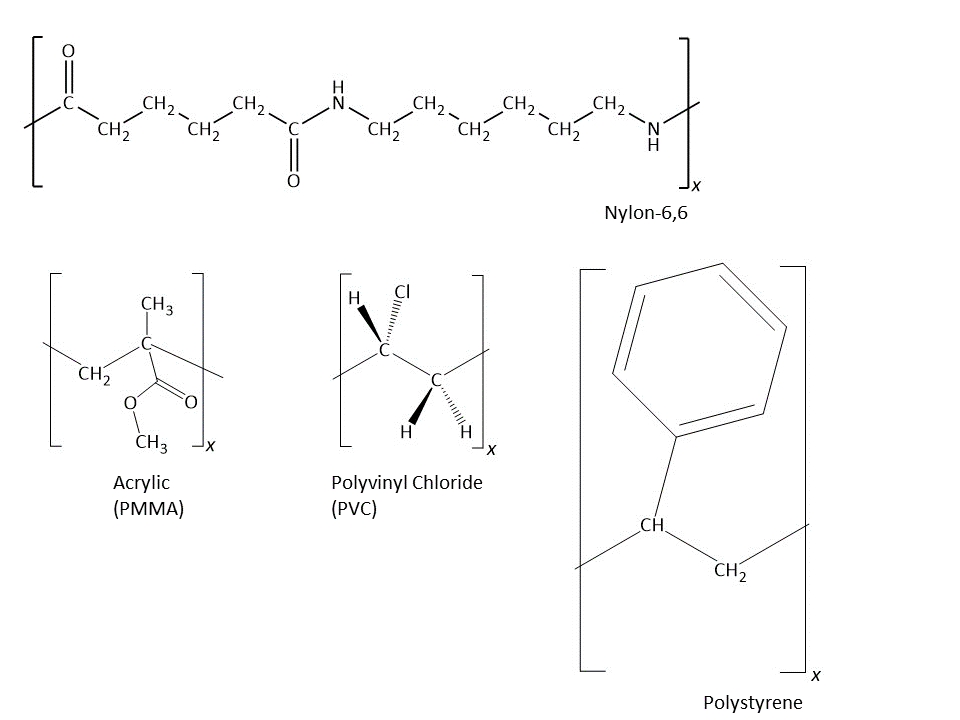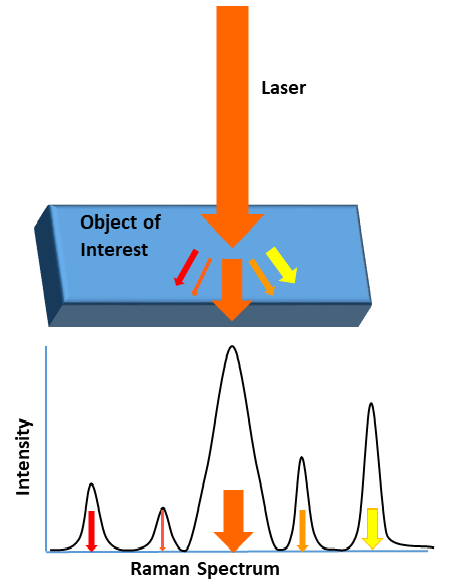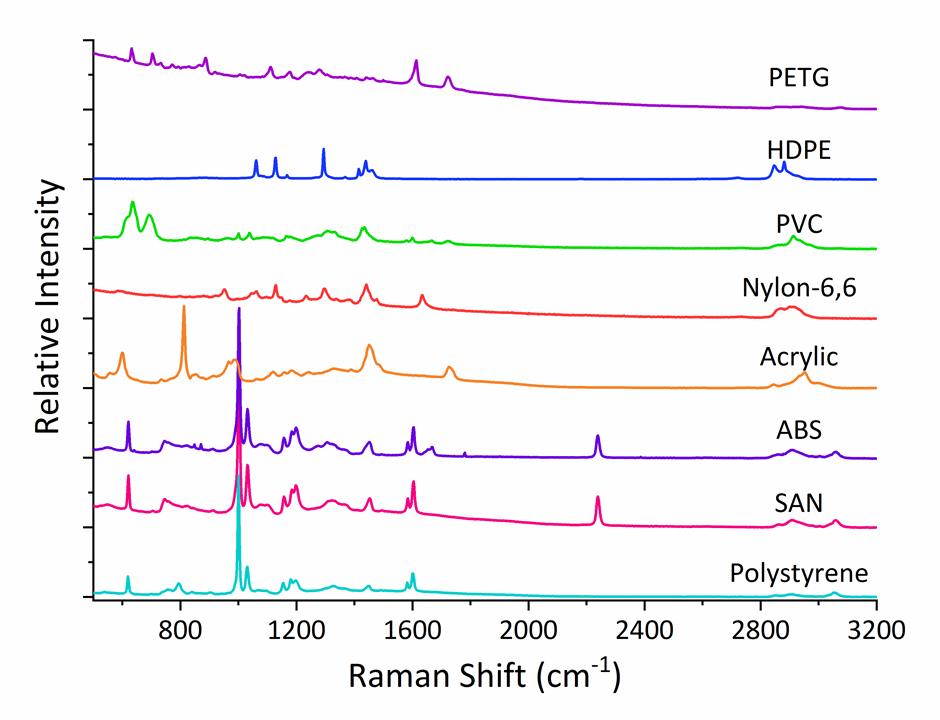What Are Plastics?
Plastics are a family of materials composed of synthetic molecules known as polymers. Polymers are extremely large molecules made of repeating units called monomers. By chemically combining thousands of monomers, a single polymer molecule forms. This process is illustrated below:

The simplest polymer is polyethylene, which forms when ethylene monomers link together to form a single polyethylene chain. The chemical reaction is shown here, where the polymer chain is represented by a repeat unit in brackets:

Chemists incorporate different elements and arrangements of atoms in polymers to produce plastics with a wide variety of physical and chemical properties. The repeat units for some common plastics are shown below:

Analysis of Plastics by Raman Spectroscopy
Raman spectroscopy is an effective and nondestructive means for the identification of plastics in artifacts. We directly analyze plastic objects to obtain a chemical fingerprint, which provides evidence of the material’s chemical composition.

When performing Raman spectroscopy, the surface of an object is illuminated with laser light of a single color.
Light scatters off the surface of the object, and most of the scattered light is the same color as the laser. However, some of the scattered light is made of different colors because it interacts with the object. This is called the Raman effect.
The intensity of each color of scattered light is graphed, creating a Raman spectrum. The resulting pattern of peaks is specific to the chemical composition of the object. So, each type of plastic has a unique pattern of peaks – a chemical fingerprint.
Since each type of plastic has its own unique fingerprint, we are constructing spectral libraries of modern and historic plastic samples. Data from these libraries is used to aid in identifying the chemical composition of artifacts from the Plastics Collection. Part of our modern plastics spectral library is shown below:
